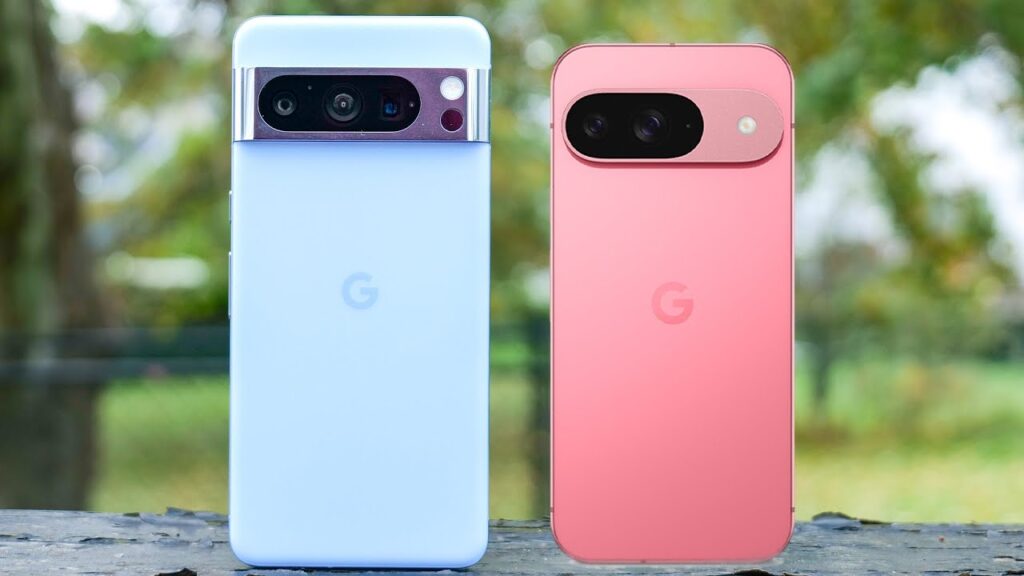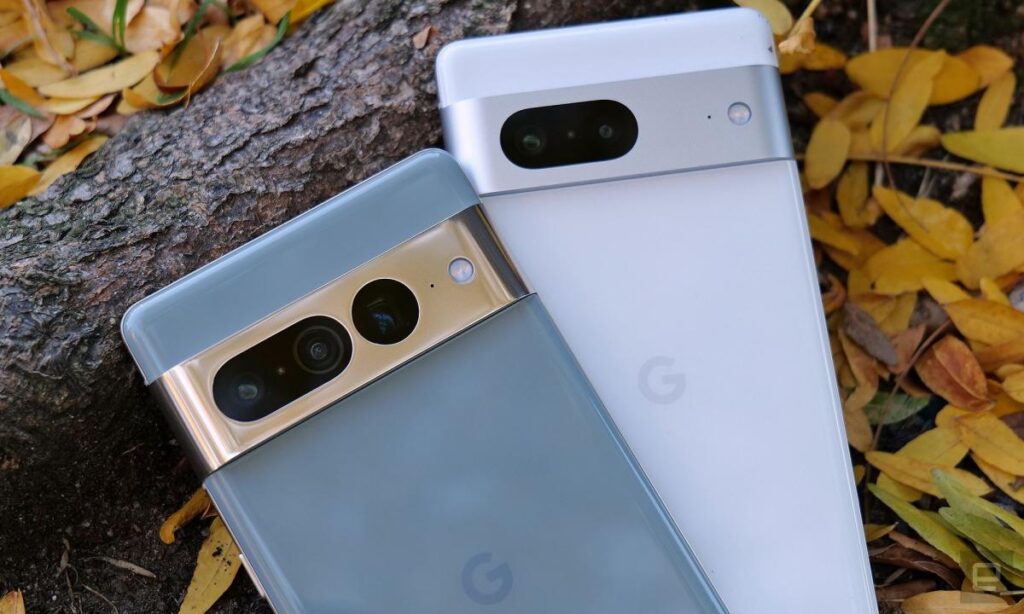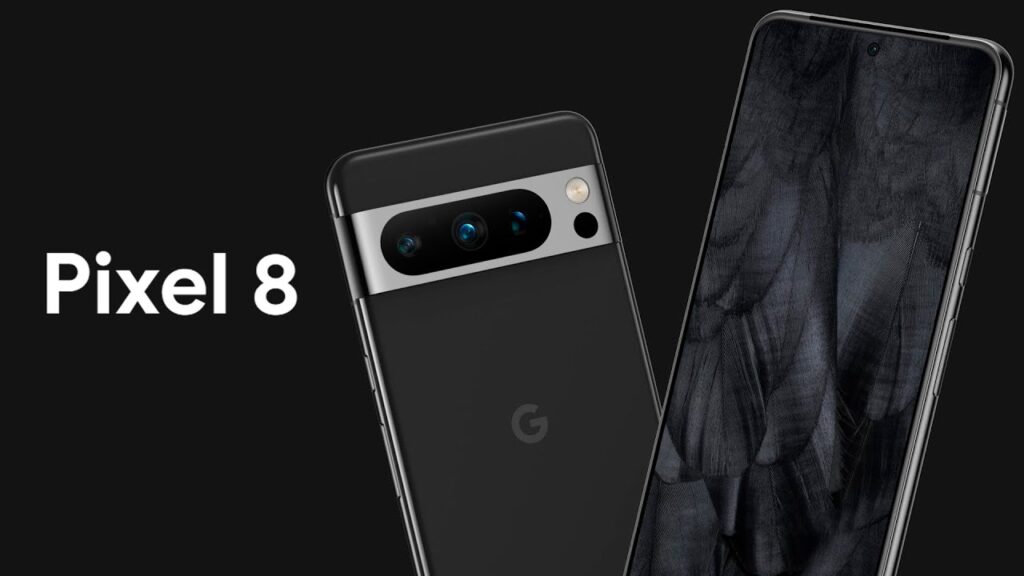The Google Pixel 8 Pro is the company’s greatest Pixel ever, and It embodies Google’s vision for the development of mobile technology, even though at times that vision can be a little hazy and unclear. The photography skills, supported by Google’s machine learning, are unsurpassed by any other phone manufacturer, and it has a wonderful display that is bigger and brighter than its competitors at this price.
While some of the new AI functions are interesting and helpful, others are strange or even repulsive, and the phone exhibits the worst traits of Android. There is still room for development, however, and the hardware provides Google with a fantastic foundation upon which to expand. Google has pledged to support this phone for seven years in terms of upgrades, which is a lengthier commitment than ever before.
While I’ll be ready for a new look and feel next year, I’m delighted to report that the Pixel 8 Pro is Google’s best-looking Pixel yet. The Pixel 8 Pro is a sleek update to Google’s venerable Pixel lineup.
This is Google’s most ambitious Pixel to date, including significant camera improvements that will please even professional photographers and a Tensor G3 chipset designed specifically to power Google’s machine learning features. The performance of this phone has Google so confident that it is pledging an unprecedented seven years of significant updates, which is longer than any other phone manufacturer presently supports its phones.
Having said that, this is a pretty peculiar contraption. Google would have had a clear winner, one that could compete with less-expensive flagships like the Samsung Galaxy S23 Plus or the Apple iPhone 15 Pro, if it had simply released a generic smartphone with the Pixel 8 Pro’s cameras, display, and design. Google, on the other hand, is foraying far into the realm of machine learning with generative AI features that will provide fresh experiences to your phone.
Google Pixel 8 Pro Specifications

| SPECIFICATIONS | Description |
| Dimensions: | 162.6 x 76.5 x 8.8mm |
| Weight: | 215g |
| OS: | Android 14 |
| Screen size: | 6.8 inches |
| Resolution: | 1344 x 2992 pixels |
| RAM | 12GB |
| Storage: | 256GB, 512GB, 1TB |
| Rear Cameras: | 50MP main; 48MP |
| Front Camera: | 10.5MP |
| Battery: | 5,050 mAh |
Google Pixel 8 Pro Price

$999, £999 or AU$1,699
Although I had hoped Google would lower the price, the Pixel 7 Pro is a little more expensive than the model from a year ago. That’s because, to be honest, the performance and value of the Pixel 7 Pro didn’t hold up very well over time, and speculations claimed that the Pixel 8 Pro wouldn’t provide much improvements over its predecessor. The Pixel 8 Pro, on the other hand, comes out to offer far better value and performs admirably in comparison to rivals in its price range.
The vow by Google to support the Pixel 8 Pro for seven years with significant software updates, security updates, and Pixel feature drops is the most encouraging manner the company has increased the value of the device. No Android phone manufacturer has ever provided this degree of long-term support, and Android phones have historically been deficient in durability and long-term value. After around five years, even Apple stopped providing new OS upgrades for iPhones.
Although the Pixel 8 Pro’s prospects as a long-term gadget are dubious due to its subpar performance, at least we know Google won’t overlook it and let it wither on the vine. Of course, you won’t keep your phone for seven years, but because of Google’s support pledge, it should hold its worth better when you decide to trade it in or sell it. Time will tell, and there are additional factors that make this phone more valuable than the one from the previous year.
Google Pixel 8 Pro Display
This year’s main feature is the Pixel 8 Pro display, which Google even branded with the name Super Actua. You see, the Pixel 8 is your standard Actua. Practically speaking, it appears that this refers to the brightness of the display because it is really bright. When it is at its brightest, the Pixel 8 Pro can produce 2,400 nits of light, and it can still produce 1,600 nits when you are not in direct sunlight.
The Pixel 8 Pro display outperforms the iPhone 15 Pro Max in practically every category. The Pixel has a superior screen in terms of brightness, overall resolution, and sharpness (pixel density). When compared side by side, it was considerably more difficult to identify a difference, even though the Pixel was sometimes noticeably brighter, particularly when looking at an entirely white object.
At that time, I had the Pixel display set to the iPhone’s lacking “Adaptive” mode, which is brighter. The colors and brightness levels I saw when I switched the Pixel display settings to the ‘Natural’ screen color style were much more similar to those I’m used to viewing on an iPhone.
Google Pixel 8 Pro Design
What can be said about a phone design that hasn’t altered much in the past three years? The Pixel 8 Pro has new colors, a matte finish, and is somewhat more curved than last year’s model, similar to the iPhone 15 series. If you pay attention to the small things, as I do, it is unquestionably nicer than last year’s model.
The Pixel 8 Pro has corners that are more rounded and a display that is more flat. This improves your ability to view your material while also making the phone easier to hold. The finish is beautiful, and the hues are more elegant and welcoming than odd and cutting-edge.
Google Pixel 8 Pro Cameras

The main camera in the Pixel 8 Pro is noticeably superior to the camera on the Pixel 7 Pro, however, it can be challenging to pinpoint the differences. Although the number is lower, a wider aperture is preferable since it admits more light, and the improvement is exponential rather than linear. The camera’s lens features an f/1.65 aperture, which is wider than the f/1.9 aperture in last year’s lens.
The Pixel 8 Pro’s f/1.65 lens is an amazing achievement, in contrast to the Pixel 7 Pro’s f/1.9 aperture, which was a somewhat underwhelming feature. You see, the figures are unclear, and it’s difficult to brag about the spec. Although the main camera of the iPhone 15 Pro has an f/1.8 lens, which won’t let as much light in, there are obviously many other things to take into account.
Some of the photos I took with the Pixel 8 Pro appeared better than those I took with my iPhone 15 Pro Max, but other photos, particularly those taken at night or in low light, appeared better on the iPhone. That’s unexpected, but Google can still take pride in a few things.
Even if you aren’t trying for a macro look, the Pixel 8 Pro still allows you to get closer to your subject for better macro photos than the iPhone. Compared to the iPhone, the Pixel 8 Pro handled food photography far better. In poor lighting, the natural appearance that the iPhone favors can make food appear unappetizing. A camera that can perform some improvements is preferable.
Speaking of improvements, not all of the ones for the Pixel 8 Pro have yet been completed. Your nighttime films will eventually upload and get better with the Night Sight video improvement, but it is not yet available. The main and telephoto cameras’ zoom enhancements are also ineffective. Those features are probably going to be released in a feature drop, ideally before the year is up.
Google Pixel 8 Pro Performance
Measurement of performance on a Pixel phone is challenging. The Pixel 8 Pro does just fine in terms of raw performance, pushing games and visuals to new heights, but it won’t compete. It ran high-resolution films flawlessly and handled all of my favorite games, but everything looked better on devices like the iPhone 15 Pro or even older Android devices like the Galaxy S23 Ultra (which is still available for around the same price as the Pixel 8 Pro now that it’s eight months old).
The Pixel 8 Pro, on the other hand, is a generally reliable device, especially when compared to other smartphones in this price range. Thanks to a bigger battery and improved power management provided by Google’s Tensor G3 chipset, battery life is great. The display is quick and fluid, and it can emulate the muted and organic iPhone tones if you choose or make Google’s interface design pop when you want.
The Pixel 8 Pro has a temperature sensor, although I’m not sure why. As Google implies, it is not actually useful for measuring the temperature of pans during cooking because it is only accurate up to 300 degrees Fahrenheit (or roughly 150 Celsius). I want to check my oven up to 500 degrees or more, and I need my frying oil to be at least 350 degrees. Google, try once more.
Second, Google has a poor history of providing assistance for its own products and maintaining its word. With the Pixel 6, Google announced the Pixel Pass upgrade program, which promised an update after 24 months if you joined.
Perhaps Google will provide this phone with seven years of genuine support, including every software update and new feature created between now and 2030. Or perhaps this phone will just receive a subset of those updates and occasional additions of new functionality. Or perhaps Google will create a completely new category of Android specifically for outdated phones like this one—a disappointing, severely condensed version compatible with the first gadgets.
Google Pixel 8 Pro Software

A few software enhancements on the Pixel 8 Pro are promising, and they are framed in Google’s move toward machine learning and artificial intelligence. The new call filtering function operates flawlessly. The voice I got when I called my Pixel 8 Pro from a different number sounded normal, if a little too casual, but that’s a wonderful problem to have. Better a friendly robot answering my calls than a robotic voice.
Surprisingly engaging is the new AI wallpaper. Since it isn’t really a free-for-all generative AI-making graphic, it initially appears to be constrained. Instead, it provides you with a list of categories and writing suggestions akin to MadLibs. Choose a scene that is “imaginary,” such as “A bizarre bicycle made of pink and purple flowers.” There are various choice possibilities for the bicycle, flowers, and colors. I might have selected a boat, a lantern, a lighthouse, or a UFO instead of a bicycle.
There are 12 different object selections, 30 different material options, including flowers, fleece, and the crystalline mineral rhodochrosite, seven different color combinations, and 30 different material options. The AI presented me with three different coral and tan fleece lighthouses. My calculations show that the Imaginary category by itself can provide about 7,500 wallpapers. There are 12 categories, including X-ray, Volcanic, and Imaginary.
The main issue I have with a lot of Google’s software on the Pixel 8 Pro is that Google claims you can “personalize your experience with AI wallpaper” on the Pixel 8 Pro website. I made a wallpaper with AI, but is it personalized? I made a few selections and scrolled through the outcomes. Who is this individual?
Uncomfortably frequently, Google describes the properties of its machine language as if they were invented by a real person. There is no human involvement or experience when the creation is done by the machine. Am I customizing that email if I utilize Google’s software to write the entire message or make a new group photo? Have I made that picture my own?
No, I’m employing a tool—a machine—to assist me in doing or creating a task. And that’s wonderful! That is helpful! Google, however, is not presenting the Pixel 8 Pro and all of its new AI functions in that manner. Google doesn’t imply that you can make an image.
Google Pixel 8 Pro Battery Life
As long as you stay away from the A-series, battery life on Pixel phones becomes better every year, and I’m delighted to report that the Pixel 8 Pro has no issue lasting through a full day of use. That shouldn’t be shocking considering that it has a bigger battery than both the Apple iPhone 15 Pro Max and the Samsung Galaxy S23 Plus. You’ll need to get a gaming phone if you want something larger than what Google managed to fit in.
Power management has a tendency to be aggressive. Although the screen is bright, Google keeps the brightness set to a level that won’t damage your eyes or use up the battery too quickly. Additionally, there are many built-in power management capabilities.
The Extreme battery saver, which restricts more apps and background operations, is an option in addition to the Standard energy saver. Additionally, there is a mysterious adaptive battery option that is enabled by default. Better still, the battery lasts a long time.
I got a fully charged battery in one hour and a 50% battery in half thanks to the Pixel 8 Pro’s respectable 30W charging rate. Even yet, there is space for improvement, especially if the battery size continues to increase.
